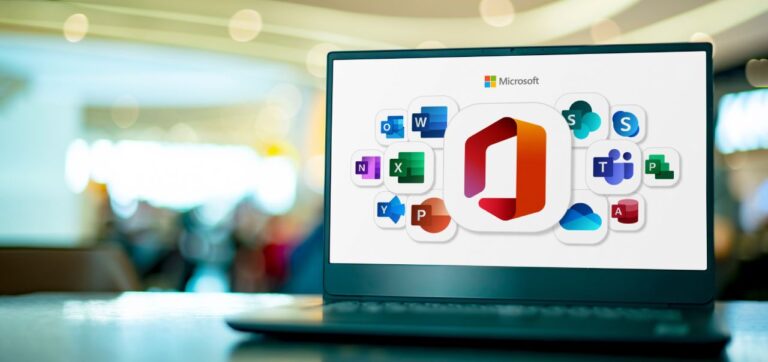
The way organizations connect, collaborate, and share knowledge has dramatically changed. Traditional legacy intranet systems, while once effective, are now falling behind in today’s digital-first workplace. With increased demand for real-time collaboration, mobile access, and cost-effective IT management, businesses are making the smart move migrating to Microsoft office 365.
In this blog, we’ll explore the top reasons why migrating your legacy intranet to Microsoft office 365 is not just beneficial but essential.
Know More About Our Microsoft 365 and Consulting Services
Know why you should be migrating from legacy Intranet to Microsoft office 365
Besides the seamless roll out of updates which the legacy systems lacked below are the other considerations
#1 Cost-savings
Legacy intranet systems are built on physical data centres and servers. Large companies had invested heavily in infrastructure to provide accessibility to company communication, document repository and their internal sites.
This kind of investment often provided returns over a long-run. As a result, it was difficult for small and medium companies to provide the same facilities to their employees. Additionally, maintaining such heavy-duty infrastructure meant companies had to invest in skilled professionals for support and maintenance. That further decreased their bottom line.
One of the biggest advantages of cloud computing is that businesses do not need to maintain physical infrastructure to host intranets. They are hosted on Microsoft’s data centers. It also minimizes the need for a large technical support team. As a result, it saves businesses upfront investment as well as recurring costs.
#2 Updated Design
The classic SharePoint sites feature outdated design concepts which were due a much-needed overall. For the most part, the design language was stagnant and customizations were time-consuming and required a developer hours together.
A lot of that has been remedied thanks to Microsoft’s new universal design language. If you look at Windows 10, Windows 10 Mobile and their Office 365 applications, you’ll observe a consistent design template. The same has been filtered down to SharePoint applications. Companies can now create modern, contemporary communication sites and hubs (more on that later) without spending time and ado on customizations.
A common complaint for legacy intranet users used to be responsiveness. Previous SharePoint iterations lacked cross-browser compatibility and responsiveness. Even some of the indigenously developed intranet sites lacked that. But with mobile penetration reaching greater heights each year, even intranet sites need to be compatible on multiple browsers and allow for better readability on mobile devices. That has been made available in the new SharePoint sites.
#3 User-Oriented Features
The modern interface brings a host of user-oriented benefits that were missing in the previous iterations. Site management is now easier and does not need core technical expertise. Previously, site administration, user profile management, etc. required a core understanding of how these systems worked.
Microsoft has now reworked them to a more user-friendly system. Businesses can now handover departmental sites to their specific managers without thinking about dedicated training programs. That makes implementation and daily use a lot easier than before. Teams can now make their own updates and changes.
Another new feature that Microsoft introduced is the Hub site. Hub sites allow inter-related communication sites to be collated at a single site. So instead of creating ’n’ number of inter-related communication sites and sub-sites, you can create one single Hub site and allow it to connect with other communication sites. The navigation, design language and usability will remain the same across the board. This will help departmentalize content and allow for better accessibility.
#4 Allows Hybrid Content Management
If your business has a presence in multiple countries and you’re worried about complying with data retention laws, then good news! While Microsoft is working towards cloud compatibility, it also allows hybrid content management by retaining certain information on physical premises.
The intranet architecture would need to be configured in a way that allows you to take advantage of cloud’s scalability and reliability while ensuring control of content management and storage. In fact, Microsoft itself works with the hybrid content management system.
#5 SharePoint Framework Web Parts
The SharePoint Framework (SPFx) allows developers to create web parts and sites on your intranet. It is an open development model so that your engineers can design content in a way that works for your business. You can now import legacy SharePoint sites to the Office 365 environment and makes changes to it, without the need for any re-learning.
Create A More Connected Business Environment with Office 365
With the help of their hub sites, communication sites, SharePoint Framework and new accessibility features, transferring to Office 365 has never looked more beneficial. Microsoft is forward-looking on the prospects of cloud and it can help businesses get more bang for their buck.
Start Planning Your Migration
TrnDigital offers migration support and Office 365 Managed Services for businesses. It’s tricky to wade through large-scale migration. That’s why it helps to have the services of experienced professionals adept at understanding business needs, creating custom solutions and dealing with Office 365 environment.
FAQs
-
What are the key benefits of migrating to Office 365 from a legacy intranet?
Migrating to Office 365 brings benefits like cost reduction, modern UI, mobile access, cloud scalability, and enhanced collaboration tools.
-
Can I retain my existing SharePoint content during migration?
Yes, legacy SharePoint content can be migrated and even modernized using the SharePoint Framework in Office 365.
-
Is Office 365 secure enough for sensitive business data?
Absolutely. Office 365 includes enterprise-grade security features, compliance tools, and the ability to implement hybrid content management for sensitive data.
-
How long does it take to migrate from a legacy intranet to Office 365?
Timelines vary depending on the size and complexity of your intranet, but with expert guidance, many migrations can be completed in a matter of weeks.
-
Does TrnDigital provide post-migration support?
Yes, TrnDigital offers end-to-end support—from planning and migration to training and ongoing managed services for Office 365 environments.




